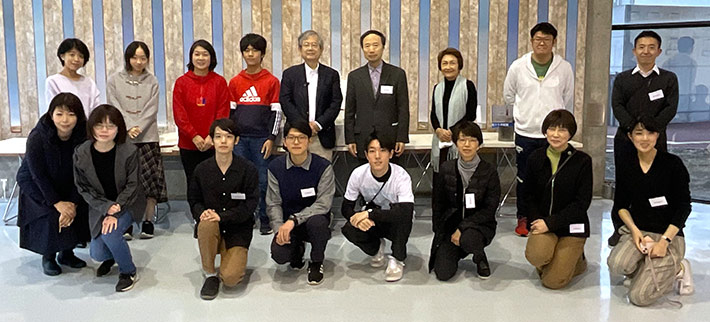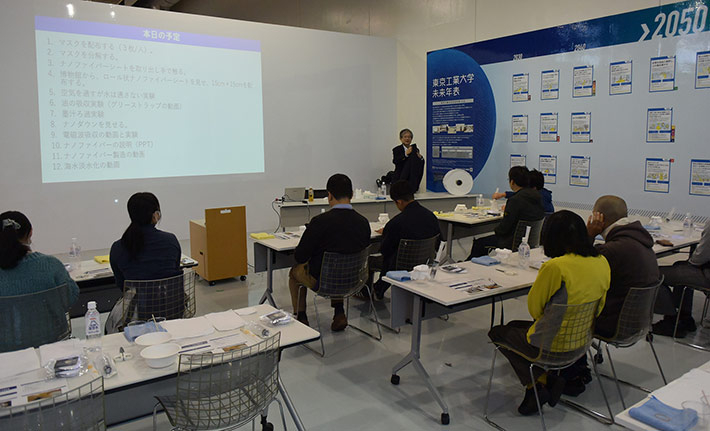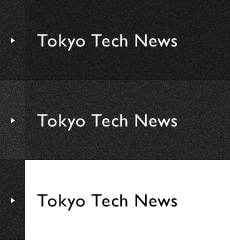The Tokyo Tech Museum held a science class to explore the world of nanofibers with members of the public on November 12, 2023. Targeted at students in middle school or higher and other curious participants, "Hands-on learning about magical nanofibers" was supported by STEAM Education for Younger Generations, the science education support arm of the Tokyo Tech Fund.
This class was held to provide an opportunity for participants to learn about nanofibers, which have been successfully commercialized based on cutting-edge research at Tokyo Tech, and to consider their future possibilities as materials that support our daily lives. A total of 22 people participated in the morning and afternoon sessions.
Heading the event was Tokyo Tech Professor Emeritus Akihiko Tanioka, a leading expert in the field of polymer nanofibers. He has been involved in the development of nanofiber products at Zetta Ltd., a Tokyo Tech-born startup that paved the way for mass production, and 3CF Co., Ltd.
Participants learned about the properties of nanofibers through four different experiments, which included the decomposition of a nanofiber mask, an experiment to confirm that air can pass through while water cannot, an experiment to absorb oil, and an experiment to filter ink. Student staff were present to help the participants during the experiments. After this, Professor Emeritus Tanioka explained the still scientifically unexplored world of nanoscience, the properties of nanofibers, and their manufacturing and utilization methods.
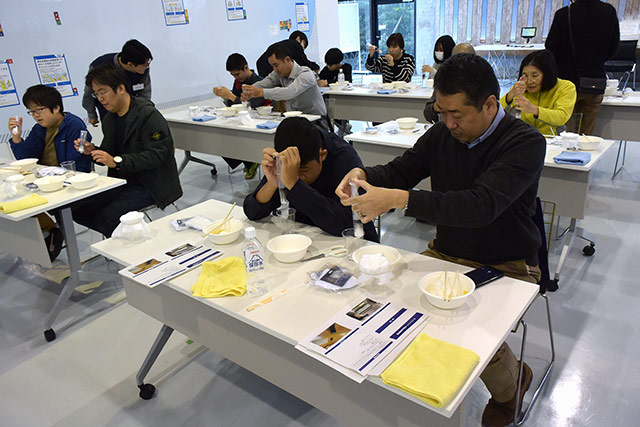
Participants focused on ink filtration experiment
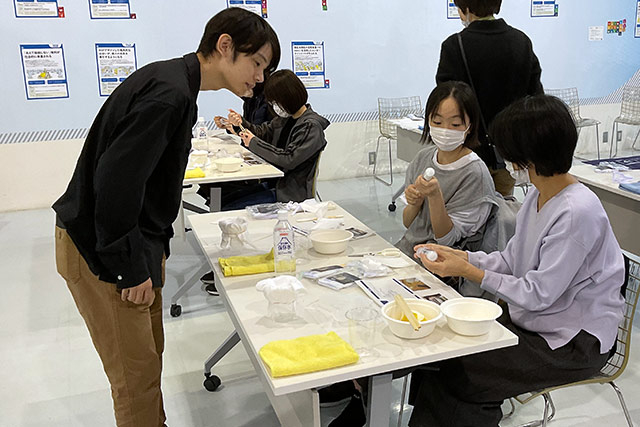
Student staff advising participants during experiments
Nanofibers are already being used in a variety of fields and products, including protective masks, winter clothing, construction materials, electromagnetic shielding, and grease traps, but this event also provided a rare opportunity to learn about future developments, such as nanofiber technology being used to convert seawater into fresh water.
. Any information published on this site will be valid in relation to Science Tokyo.


